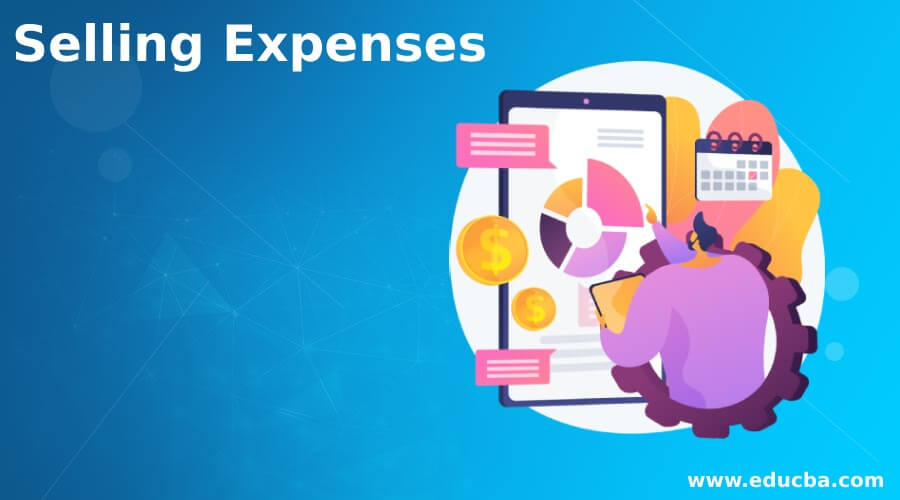Definition of Selling Expenses
The company incurs selling expenses for promoting, distributing, and marketing its products or services, which are recorded in the income statement or profit and loss account. These expenses are not directly or specifically related to the company’s production of goods or provision of services.
Explanation
The company categorizes its selling expenses under the indirect head expenses and includes them below the gross profit and other indirect expenses. These expenses are used to calculate the total cost of the company’s product or service and help calculate the earnings before interest and taxes. The company incurs these distribution, marketing, and selling expenses to enhance and streamline its sales activities.
As explained above, these are not the direct expenses directly related to producing the goods or services. The company does not include them in calculating its gross profit. However, the company presents them below the head of Operating expenses in its income statement.
Example of Selling Expenses
Let’s consider the company ABC ltd. Its income statement shows the following details;
| Particulars | Value | |
| Sales | $8,000,000 | |
| Cost of goods sold | ||
| Material | $1,000,000 | |
| Labor | $500,000 | |
| Overhead | $900,000 | $2,400,000 |
| Gross Margin | $5,600,000 | |
| Operating Expenses | ||
| Selling expenses | $500,000 | |
| Administrative expenses | $400,000 | |
| Depreciation & Amortization | $300,000 | $1,200,000 |
| Operating income | $4,400,000 | |
The company deducts selling expenses of $500,000 from the gross margin under the head of operating expenses to arrive at the operating income.
What Comes Under Selling Expenses?
The following is the list of expenses that come under it:
- Freight charges paid by the company: The freight charges paid for delivering the goods to the customer are considered selling expenses.
- Sales commission: Many companies pay the commission to different sales agents to boost sales in a particular area. As sales commission is directly related to the company’s selling activities, it is considered a sales expense.
- The charges relating to the delivery vehicle: All the charges, including the fuel and other vehicle expenses through which delivery of the goods to the customer place, form part of the selling expenses.
- Repair and maintenance charges: These repairs and maintenance charges are related to the delivery vehicle used for delivering goods to the customer and thus form part of the selling expense.
- Depreciation of the delivery vehicle: There is wear and tear due to the delivery of goods to the customer; hence, these expenses also come under selling expenses.
- Insurance cost of the delivery vehicle: Every delivery vehicle is always prone to any unforeseen future accident during the transit of goods to customers; hence, it has to be insured, so the insurance charges of the delivery vehicle come under selling expenses.
- Insurance cost of goods in transit to the customer: Insurance expenses paid in connection with the goods to protect them from loss or theft form part of the selling expenses.
- Rent and rates charges for the warehouse: The company includes all rent and rate charges paid in its selling expenses as part of the selling activity until the goods reach the customer’s place.
- Light and power charges of the warehouse: These charges are paid in the form of maintenance charges of the warehouse in which goods are placed toll they reach the customer’s place.
- Insurance of the warehouse: The warehouse incurs insurance charges as part of the selling expenses because it protects the goods placed within from any unforeseen future losses, ensuring their safety.
- Discounts allowed to the customers include cash discounts and other forms like samples distributed as a product promotion by the company.
- Bad debts incurred by the company: Often, debtors fail to pay the entire sales amount, thus defaulting on their payment. Hence, it affects the sales revenue and is therefore considered the selling expense.
- Promotion expenses to boost sales: include advertisement expenses in hoardings or any other form and the free samples distributed as the promotion.
Why are Selling Expenses Important?
It is important due to the following reasons:
- Analysis of cost-benefit: It is considered a worthwhile expense because they contribute to increasing the company’s sales. These expenses can be direct, indirect, tangible, or intangible; hence, they help the management of the company in the decision regarding the optimum utilization of funds, i.e., where they can invest their money to earn more profits.
- Analysis of the Break-even: The company uses Cost-Volume-Profit analysis to calculate its sales volume and determine if it covers all its variable and fixed expenses, surpassing the breakeven point. The management considers both the fixed and variable selling charges in this analysis. If the company is making losses, this is the point where management can decide whether it should continue production or not.
Conclusion
It is one of the most important parts of the income statement, especially in the FMCG sector. In such industries, where there is high competition, the management can properly manage its selling expenses to increase profitability. Moreover, the selling expense calculation helps the company decide when it can stop production or, vice versa, increase production.
Recommended Articles
This is a guide to Selling Expenses. Here we also discuss the definition and What Comes Under Selling Expenses, along with an example and its importance. You may also have a look at the following articles to learn more –




